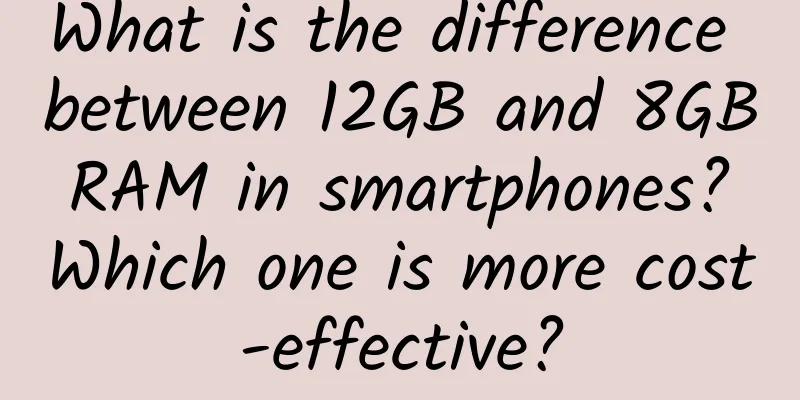The glittering meat, can I eat it?

|
"A beautiful day is coming to an end. Tomorrow is the weekend, so I have to eat something good tonight." I was tidying up the table while thinking about what to buy later. I decided to eat the famous delicacy from Leshan, Sichuan tonight - sweet-skinned duck! After get off work, I went to the market, bought the sweet-skinned duck, and went home. Just as I happily opened the box, something strange happened. Why was the duck shining? Was it because I was too hungry to see clearly? Duck meat shows colorful metallic luster at different angles (Photo credit: Photo taken by the author) After careful observation, I found that the metallic luster only occurs in the areas with solid muscles, and this phenomenon is not observed in bones, white fat layers, and epidermis. Therefore, after reasonable speculation, this should be related to the interaction between light and muscles. For more details, please listen to me slowly. 1. Muscle structure Schematic diagram of muscle microstructure (Translated by the author, see the picture for the source) Take skeletal muscle as an example. Skeletal muscle fibers are muscle cells, which are elongated and multinucleated. Skeletal muscle is composed of muscle fiber bundles, which are composed of muscle cells. Myocytes contain multiple myofibrils, which can be divided into several sarcomeres. In the fine structure of muscle, there are thick filaments and thin filaments. Looking at the screen full of "muscle", are you almost unable to recognize this word? It doesn't matter. You just need to know that the muscle structure is complicated, but it actually looks very simple. It is just a regular bundle of strands, like wires and cables. When the meat is cut horizontally, the muscle section is composed of small sections. When light hits the cooked, shiny muscle section, the reflection of light is actually completed by the small sections. So what does this have to do with colored reflections? Read on. 2. Interference of Light Waves and Grating Dispersion When raindrops dripped onto the calm lake surface, the lake surface became active. The water waves on it were drawing their own circles alone, but they seemed to be disturbing and playing with each other. Raindrops falling on the lake (Photo source: veer photo gallery) Light is an electromagnetic wave. Its propagation speed in a vacuum is a constant, usually represented by the letter c, and its approximate value is 300,000 kilometers per second. What is even more amazing is that the speed of light in a vacuum is not related to the motion state of the inertial reference frame, nor is it related to the color of light, that is, the frequency of light. Since the refractive index in the air around us does not change much, we can know from the relationship that "frequency multiplied by wavelength equals the speed of light" that in life we can generally believe that the color of light in the air is related to the wavelength. Propagation of single-point light wave source and propagation of double-point light wave source (Image source: provided by the author) As shown in the figure above, when there is only one point light wave source in space, the propagation of light is like a drop of water falling on the water surface, spreading out in circles and gradually weakening as the wave moves away from the light source. This is the result of the conservation of energy, because as the circle expands, the energy is constant, which inevitably leads to the wave gradually weakening as the propagation distance increases. Imagine that we light a candle, and the flame will become dimmer as it moves away from the light source. When there are two point light sources several wavelengths apart in space, the propagation of waves is no longer uniform in all directions but becomes directional, with strong propagation in some directions and weaker or even zero propagation in other directions. This is also a manifestation of the conservation of energy - if the propagation ability is strong in some directions, there must be directions with weaker propagation, which concentrates the energy. Surely the cross section of the muscle is even more amazing? Yes, that's exactly what it is! 3. Grating and Dispersion Effect Propagation behavior of red and blue light in the "muscle model" (Image source: provided by the author) The structure of the muscle is mathematically and physically modeled. Each muscle fiber bundle is considered as a wave source connected together, and the distance between point light sources is much smaller than the wavelength. The gap separated by the sarcolemma can be regarded as a break in the continuous wave source. According to the microstructure of the muscle shown in Figure 7, the cross-sectional diameter of the muscle fiber is about 50μm, and the interval is about 10μm. Based on this data, we simulated the propagation of light waves after reflection on the muscle, and found that a magical phenomenon appeared! Scanning electron microscope image of cooked muscle under normal pressure (Image source: Reference [2]) First, no matter what the color of light is, their propagation has obvious directionality. Secondly, in the order of "red, orange, yellow, green, cyan, blue, and violet", red light has a long wavelength and blue light has a short wavelength. In this process, except for the central symmetry line perpendicular to the muscle surface, their propagation directions are consistent, and the deflection angle of red light is smaller than that of blue and violet light. This is exactly the opposite of the refraction behavior of glass. This structure is like a fence, so it is called "light grating". Why it is pronounced as "light grating" is another story. Grating with 1200 reflective lines per mm (Photo credit: Photo taken by the author) Since different colors of light have different propagation angles except for the center, the grating structure has the function of separating light by color (more precisely, wavelength and frequency), so our grating has dispersion capability. One of its most important applications is spectrometer. Fiber optic spectrometer structure (Photo credit: Photo taken by the author) Grating dispersion effect diagram (Image source: provided by the author) Is there a grating in life that allows us to see rainbow-colored light? Of course there is, that is the optical disc. Optical disc and hexagonal wrench (note the shadow and color sequence) and electron micrograph of the optical disc (Photo credit: Photo taken by the author) The microstructure of the optical disc is also like a series of fences, and the dots on it are the information recorded. In the picture, we can see that the shadow is on the left, indicating that the sun is on the upper right. The red light is on the left and the blue light is on the right, indicating that the deflection angle of red light is larger than that of blue light, which is consistent with our simulation results. Therefore, if you also want to see the glittering meat, you can try to observe it at an angle, because the cross section of the muscle is basically flat, and only when you look at it at an angle can you see the dispersion effect of the grating. Through the above simulation experiment, I believe that we have solved the doubts at the beginning. Facing this piece of glittering meat, there is no need to worry about whether you can eat it, just enjoy it! References: [1] Zhong Xihua. (2012). Foundations of Modern Optics. Peking University Press. [2] Wang Zhijiang, & Jiang Aimin. (2015). Effects of ultra-high pressure treatment on the microstructure of cooked chicken. Food and Machinery (1), 4. Produced by: Science Popularization China Author: Tang Hongyang (Institute of Optoelectronics, Chinese Academy of Sciences) Producer: China Science Expo |
<<: Shenzhou 14 astronauts' first spacewalk! What's different about this spacewalk?
>>: What's so terrible about the Amazon River? Why does no one dare to swim in it?
Recommend
Xiaomi will lose the patent war? Where does Ericsson get the confidence from?
"May 21st". This is probably one of the...
How much does it cost to customize the Liuzhou nail art mini program? What is the price of customizing the Liuzhou nail art app?
There is no doubt that the topic of mini programs...
The soul of fire and thought: the dream-chasing life of a Russian female mathematician
In the history of mathematics, there is an import...
Android Custom View
Preface The detailed steps of customizing Android...
Closed-loop thinking for B2B theme promotion
PDCA stands for Plan, Do, Check, and Action, whic...
Spring Festival promotion cannot be separated from these 7 major themes
The Spring Festival is one of the most important ...
The "fission" battle between Luckin Coffee and Lian Coffee: Who is the growth king?
Two years ago, when people talked about drinking ...
This is a versatile activity plan!
A universal activity plan , so you don’t have to ...
Why does eating dumplings raise blood sugar so quickly? Six ways to eat dumplings safely
Dumplings seem to contain meat and vegetables, bo...
How to quickly advance to the second level in search oCPC? Get it now!
How many conditions are needed to send search oCP...
How much of your knowledge of psychology is reliable?
Don't trust any single research result at fac...
The "buy yogurt and get a free chick" promotion has been suspended. How many risks are there behind this "cuteness"? →
Some time ago, some supermarkets launched a "...
Oh my god! I just found out that I can control objects remotely.
Imagine if you could make distant objects respond...
APP operation and promotion: How to create a good landing page to promote user growth?
The ultimate goal of the landing page is to serve...
Ten elements of good copywriting
In the advertising industry, copywriting is the l...









